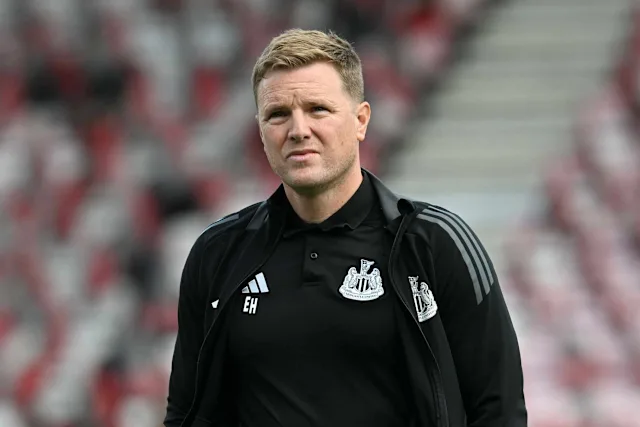As the Premier League edges closer to ditching its existing Profit & Sustainability Rules (PSR) in favour of a “squad cost ratio” model, one alarm bell has been ringing loud: even under the new regime, Newcastle United could still find themselves as much as £280 million behind their wealthiest rivals. That figure, often cited by financial analysts, underlines a deeper challenge — that reforms may shift the terms, not the balance, of financial inequality in English football.
Why the change is happening
The PSR — introduced in 2015–16 — aims to prevent clubs from living beyond their means. Among its constraints:
Clubs are allowed cumulative losses of up to £105 million over a three-year window, excluding certain costs (infrastructure, youth development, etc.).
Clubs face penalties, including point deductions, for serious breaches.
However, PSR has increasingly come under fire, especially by clubs with large funding sources but relatively smaller commercial revenues, like Newcastle. These clubs argue the rules stifle their ability to invest and to compete with clubs enjoying massive broadcasting, sponsorship and global commercial revenue.
Under pressure from stakeholders and potential legal challenges, the Premier League is poised to scrap PSR in favour of a revenue-based “squad cost ratio” (SCR) model — essentially capping wages, transfers, and agent fees as a percentage of a club’s revenue. Discussions so far suggest figures in the region of 70% (for clubs in European competition) or 85% (for others), though the final version has yet to be settled
How the £280m figure is calculated
The £280m disadvantage is not an arbitrary number: it emerges from comparing what clubs of different revenue sizes can do under the same percentage cap.
Suppose a top club generates £700 million in revenue. Under a 70% SCR, that club could spend £490 million on wages, transfers and agent fees.
By contrast, consider a club like Newcastle, generating, say, £300 million in revenue. Under the same 70% cap, their allowable expenditure would be £210 million.
That creates a £280 million gap in spending flexibility between two clubs operating under the same percentage limits. This gap doesn’t even account for differences in balance sheets, debt, or borrowing capacity. The math shows that while SCR “levels the test,” it doesn’t level the starting line.
Financial analysts like Kieran Maguire have flagged this disparity — even with PSR out, the richer clubs retain structural advantages.
Why Newcastle is particularly vulnerable
There are a host of factors that make Newcastle especially sensitive to this shift:
Relatively lower revenue base
Even with recent growth, Newcastle’s revenue still trails the very top clubs. That translates to lower spending headroom under any %-based model.
Past losses and “legacy burdens”
Under PSR, Newcastle has had to carry loss years in its three-year window, constraining their recent transfer flexibility. When those years drop out of the window, they gain some breathing space — but that benefit may be limited under SCR.
Strict scrutiny on “associated party transactions” (APT)
One key constraint under PSR is how deals from related companies (e.g. sponsorships from firms connected to owners) are treated — they must be done at “fair market value.” Newcastle’s sources of investment have often faced tough scrutiny — limiting inflows beyond commercial revenue.
Lack of loopholes relative to others
Some clubs have been accused of clever accounting— selling internal assets (e.g. women’s teams) to affiliated entities to massage their profitability numbers. Newcastle, trying to stay “clean,” may be less able to leverage such measures.
Pressure to sell
Under PSR, Newcastle have had to sell players they might’ve preferred to keep (e.g. Elliot Anderson, Yankuba Minteh) merely to manage losses. Bruno Guimarães admitted PSR “got in the way” of some decisions.
What this means in practice
Still chasing from behind
Even if SCR replaces PSR, Newcastle won’t suddenly catch up to giants like City, Liverpool, or Manchester United. The gap narrows only so much; it doesn’t disappear.
Revenue growth becomes even more critical
Under SCR, the only real way to expand spending is to expand revenue. That means superb commercial deals, global branding, deep European runs, stadium expansion, etc.
Strategy over brute force
With capital spending limited, Newcastle must lean harder into smart recruitment, youth development, data analytics, and maximizing value from every signing.
Political/negotiation leverage matter
The final form of regulation — whether there’s “anchoring,” exemptions, grandfathering, special carve-outs — could shift margins. Newcastle will need to fight hard in the rule-making process.
Caution in overleveraging
In chasing short-term gains, entering into risky debt or nontransparent deals could backfire under scrutiny.
Conclusion
The proposed shift from PSR to SCR is a welcome modernization — it aligns the Premier League more closely with European norms and reflects that a static “loss cap” is blunt and outdated. But for all its promises, the new regime still carries embedded inequality.
If Newcastle are to avoid being locked into permanent financial inferiority, their pathway must be aggressive growth off the field — commercial, global, infrastructural — alongside surgical precision on the field. The £280 million warning isn’t speculative hyperbole; it’s a clarion call to act before the playing field is re-drawn.
